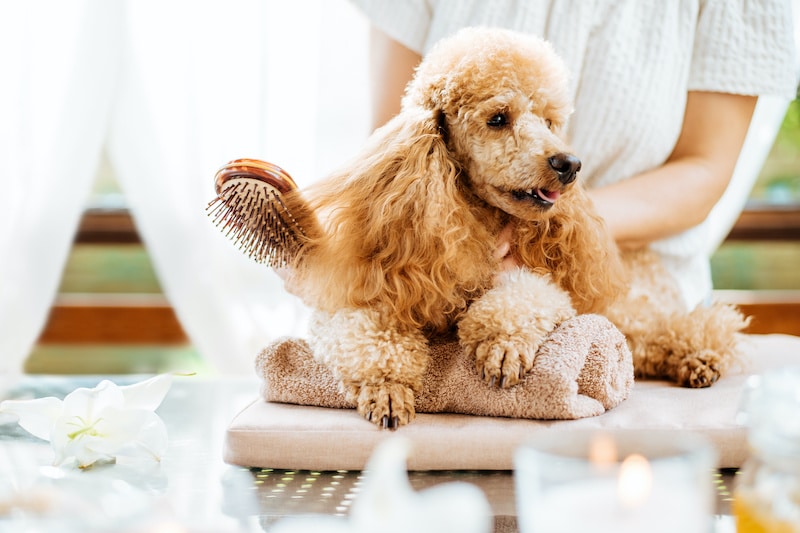Having a dog with a beautiful, healthy coat is a source of pride for many pet owners. A well-groomed dog not only looks good but also feels comfortable and is less likely to develop skin problems.
In this article, we will explore the different types of dog coats and the brushes that are best suited for each coat.

Short Hair Coats
Short-haired dogs, such as Chihuahuas, Dachshunds, and Boxers, have smooth, short coats that do not require much grooming. A simple brush with a soft-bristled brush will suffice to remove any loose hair and keep the coat shiny.
Long Hair Coats
Long-haired dogs, such as Shih Tzus, Lhasa Apsos, and Afghan Hounds, have coats that need more attention.
Long hair is more prone to matting and tangling, so a slicker brush or a wide-toothed comb will help to remove tangles and mats. A slicker brush has fine, closely spaced wires that are ideal for removing tangles and mats in long hair.
A wide-toothed comb will help to detangle hair and can also be used to distribute conditioning products.
Wire Hair Coats
Wire-haired dogs, such as Wirehaired Pointing Griffons and Wirehaired Fox Terriers, have coats that are dense and wiry. These dogs need to be trimmed regularly and brushed with a slicker brush or a wire brush to keep their coat in good condition.
The slicker brush will help to remove any tangles, while the wire brush will help to remove any loose hair and keep the coat looking neat and tidy.
Curly Hair Coats
Curly-haired dogs, such as Poodles and Bichon Frises, have a unique coat that requires special attention.
Curly hair is more prone to matting, so it’s important to use a slicker brush or a wide-toothed comb to remove tangles and mats. A slicker brush will help to remove any tangles, while a wide-toothed comb can be used to distribute conditioning products.
The experts say that the best brushes for Poodle coats are slicker brushes with blunt endings. They do cost a little more, but should bot bust the budget.
Double Coats
Double-coated dogs, such as Siberian Huskies and Alaskan Malamutes, have a thick undercoat that needs to be removed regularly to prevent matting and tangling.
A slicker brush or a wide-toothed comb can be used to remove tangles and mats, while a shedding blade or a furminator will help to remove any loose undercoat.
Brushing Frequency
Brushing frequency can vary depending on the type of coat and the individual dog. Brushing regularly helps to distribute natural oils throughout the coat, remove any dirt and debris, and keep the coat shiny and healthy.
It’s also a good opportunity for pet owners to check for any skin problems, such as fleas or ticks. Brushing once a week is usually enough for dogs with short hair, while dogs with long or curly hair may need to be brushed more often, such as once or twice a week.
It’s important to remember that each dog is unique and may require different grooming frequencies and techniques. If you’re unsure about the best brushing frequency for your dog, consult with a veterinarian or professional groomer.
Conclusion
In conclusion, different dog coats require different brushes to keep them healthy and looking their best. It’s important to choose the right brush for your dog’s coat type to ensure that their coat is well-groomed and free from tangles and mats.
A well-groomed dog is a happy, healthy dog, so be sure to invest in the right brushes for your furry friend.
